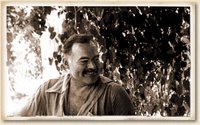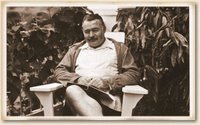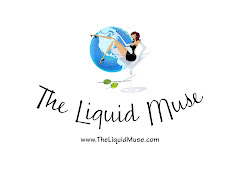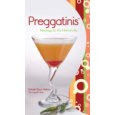 Elixir of the Night...
Elixir of the Night... You knew it was only a matter of time before the two biggest passions in liquid dining came together... wine & cocktails. H Joseph Ehrmann at San Fran's first "green" saloon, Elixir, has teamed up with winemaker Night Harvest to create these amazing sounding drinks:
The Star Gazer - Summer Cocktail (Night Harvest Chardonnay)
2 ounces Night Harvest Chardonnay
1 ounce dark rum
½ ounce vanilla bean syrup
½ ounce pineapple juice
1 lime wedge
In a Boston shaker, add all ingredients and shake vigorously for 10 seconds. Fill a 10.5 ounce highball glass with ice and strain the cocktail over the fresh ice. Squeeze the lime over the top of the drink, and drop the lime in to finish the drink.
Mixologist’s Notes:
The Night Harvest Chardonnay has bright, crisp, apple and pear notes with a hint of pineapple on the nose. I chose to build on the pineapple and create a summery, tall cocktail. The dark rum highlights the tropical flavors and brings out the oak. To further highlight the oaky vanilla, I used vanilla bean syrup as the sweetener. Shaking the drink hard creates a frothy head, and the addition of a tiny bit of lime juice on top brightens it all.
 Yuletide Moon - Holiday Cocktail (Night Harvest Merlot)
Yuletide Moon - Holiday Cocktail (Night Harvest Merlot)
4 pitted bing cherries
¼ ounce of simple syrup
1½ ounce Night Harvest Merlot
1 ounce Bourbon
one wheel slice of lemon
fresh nutmeg to grind
In a 16 ounce mixing glass, muddle the cherries (if not pitted, just remove pits after muddling). Add simple syrup, merlot, bourbon and lemon slice. Top with ice to 2/3 full and shake lightly. Empty entire contents into a 10.5 ounce Old Fashioned glass. Top with grated nutmeg and enjoy!
Mixologist’s Notes:
The Night Harvest Merlot has delicious cherry flavors and slight oak to it, so I focused on those cherry and oak notes as the building blocks of the cocktail – a riff on a classic Sangaree. Cherry and Bourbon are a natural pairing for me, so I decided to cut the drink with Bourbon, which blends superbly with the Merlot. The lemon brightens the drink and makes it surprisingly refreshing and light, while the nutmeg provides a wonderful nose on every sip.
Sunset on Dunnigan - Valentine’s Cocktail (Night Harvest Sauvignon Blanc)
2 ounces Night Harvest Sauvignon Blanc
1 ounce citrus forward, light juniper gin
½ ounce elderflower cordial
Grapefruit zest to garnish (either thin strips or a simple round slice without pith)
Pour all ingredients over ice and stir for 15 seconds. Julep strain, and serve up in a cocktail glass. Garnish with a 2” pass of a bar zester over a fresh grapefruit rind, directly over the cocktail so as to spray the oils over the surface of the cocktail. Drop the zest into the drink.
Mixologist’s Notes:
A romantic cocktail that will brighten your evening, the Sunset on Dunnigan complements the citrusy herbal qualities of the Night Harvest Sauvignon Blanc with the same notes in the spirit, while simultaneously adding the botanical dryness of a crisp gin. Elderflower cordial lends a summery, floral aspect that balances the drink nicely with its light sweetness. The slight bitterness of a spritz of grapefruit zest ties it all together.
And, the other big news... H has also started a blog! Behind My Mahogany features "sips and tips from the Elixir stick."
 Debbie Downer - UV Vodka Pink Lemonade
Debbie Downer - UV Vodka Pink Lemonade







































